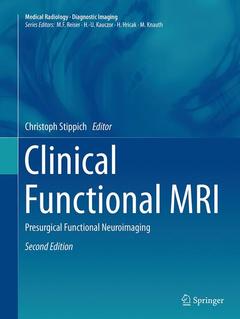Description
Clinical Functional MRI (2nd Ed., Softcover reprint of the original 2nd ed. 2015)
Presurgical Functional Neuroimaging
Diagnostic Imaging Series
Coordinator: Stippich Christoph
Language: English
Subjects for Clinical Functional MRI:
Support: Print on demand
Description
/li>Contents
/li>Comment
/li>
The second, revised edition of this successful textbook provides an up-to-date description of the use of preoperative fMRI in patients with brain tumors and epilepsies. State of the art fMRI procedures are presented, with detailed consideration of practical aspects, imaging and data processing, normal and pathological findings, and diagnostic possibilities and limitations. Relevant information on brain physiology, functional neuroanatomy, imaging technique, and methodology is provided by recognized experts in these fields. Compared with the first edition, chapters have been updated to reflect the latest developments and in particular the current use of diffusion tensor imaging (DTI) and resting-state fMRI. Entirely new chapters are included on resting-state presurgical fMRI and the role of DTI and tractography in brain tumor surgery. Further chapters address multimodality functional neuroimaging, brain plasticity, and pitfalls, tips, and tricks.




